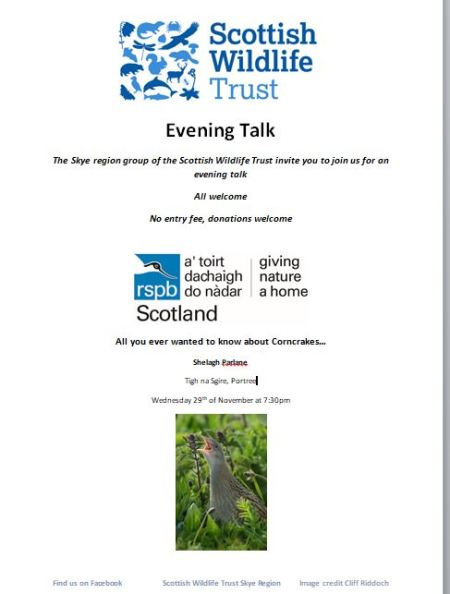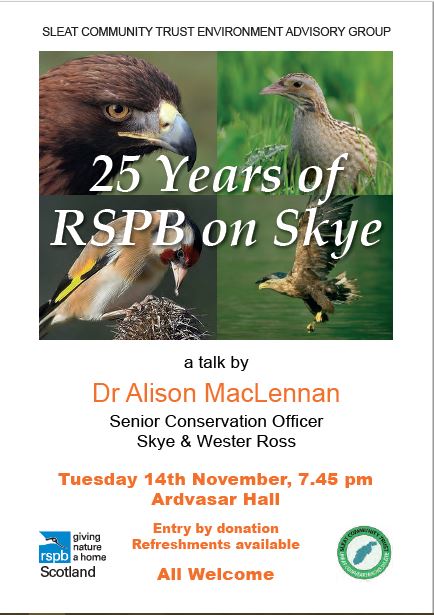A bit late but…..

A bit late but…..

A little over thirty years ago Viv Halcrow completed “A Preliminary Survey of Native Woodland on the Isles of Skye and Raasay” for the Nature Conservancy Council. Whilst I have acquired a few records from this report over the years, mostly from Raasay, I have this year had access to the original data.
Viv surveyed 101 woodland sites and from all bar seven of these that spanned two 10 km squares, I have managed to extract 9,628 useful records. For 34 sites I have been able to allocate the records to a monad, for 35 to a tetrad and for the remaining 26 only to a hectad as the site spans two or more tetrads. (I know 7+34+35+26=102 – one site was recorded as two separate sections.)
This has resulted in several new 10km square records e.g. Asplenium ruta-muraria (Wall-rue) in NG71 at Allt Cailte and rather a lot of new tetrad records – making me realise just how many areas of woodland I have not visited on Skye.
Given the relative paucity of tetrad or better records from before 2000, this has been a real boon.
I sent an Agrimonia specimen to Douglas McKean at RBGE who says my “specimen is A. eupatoria for the following reasons: leaves greyish green beneath, fruit spines not reflexed and so fruit is top shaped and the fruits are deeply grooved.” See previous post.
Just because I am paranoid I am sending another specimen to Paul Green for his opinion.
Later: Paul says “By the shape of your fruit in your photo and the specimen your plant is clearly Agrimonia procera. The lower row of bristles are reflexed. Your fruits are bell shaped and the groves are shallow. The fruits of A. eupatoria are narrow and the groves are much deeper.”
This is getting embarrassing! I now have two highly respected botanists plus another historically who think the Skye & Raasay plants are A. eupatoria plus two highly respected botanists plus another historically who think they are A. procera.
Also, I have has a reply from Tony O’Mahony (BSBI Apium referee) about the putative Apium inundatum from Loch Duagrich. He says he does not think it is a Helosciadium (Latest name for Apium) because “(a) the leaflet-bases appear to be decurrent down the rhachis (NOT so in Helosciadium), while (b) the base of the leaf-petiole does NOT display the pair of conspicuous hyaline stipules that are so characteristic of H. nodiflorum, H. inundatum and their interspecific hybrid, H. x moorei.”
He also says “my first impression was that you had possibly collected a yellow-flowered member of the genus Rorippa, as the irregularly dentate leaflet teeth brought this genus to mind.”
Members of Skye Botany Group who were present may recall that was my first thought too!
I have a piece in cultivation so with any luck this can finally be resolved next year.
The day started well with a golden eagle flying slowly past the window during breakfast, pursued by a heron and squads of hooded crows and herring gulls.
Last Saturday was the Scottish Annual Meeting of the Botanical Society of Scotland and the Botanical Society of Britain & Ireland, held at the Royal Botanic Garden, Edinburgh. It was an excellent day with 150 participants. For me the highlight was being able to compare herbarium specimens of Agrimonia eupatoria (Agrimony) and Agrimonia procera (Fragrant Agrimony). This confirmed my view that the Skye plants are the latter – see e.g. this previous post. To be even more certain, I have today sent a specimen to Douglas McKean at RBGE. Images of Skye specimen by Steve Terry:
Tuesday saw the second Skye Nature Group expedition which seems to have gone well – slugs and snails, pseudoscorpions, centipedes and white disco fungi featuring amongst other finds. I was sorry to miss it but had a better offer!
This coming Saturday (11th) is the Highland Biological Recording Group’s autumn meeting at Strathpeffer Community Centre, 10.30 for 11.00. The main talk is
Rare Invertebrates in the Cairngorms – A lesson in treasure hunting.
Gabrielle Flinn, Rare Invertebrates in the Cairngorms Project Officer
Also coming up soon:
